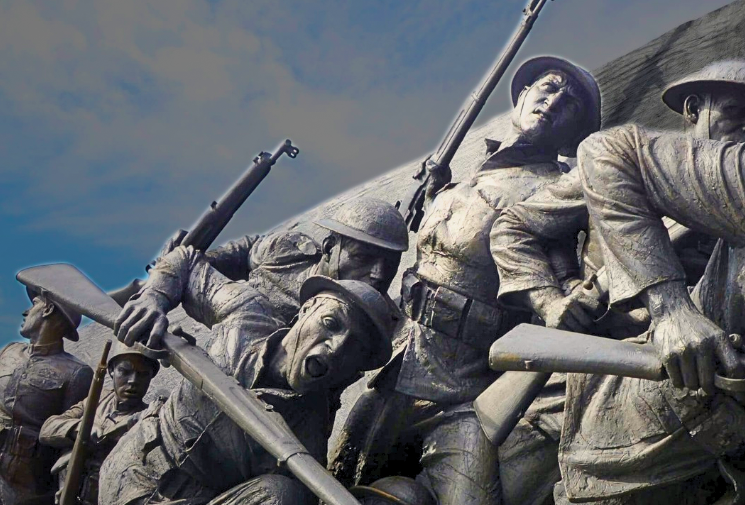This review appears in the Fall 2019 issue of Modern Age. To subscribe now, go here.
The Grand Strategy of the Habsburg Empire
By A. Wess Mitchell
(Princeton University Press, 2018)
Benjamin Franklin quipped in Poor Richard’s Almanack that “experience keeps a dear school, but fools will learn in no other and scarce at that.” History’s ability to open a window on other people’s experiences, providing lessons without tears, makes it what Thucydides describes as a school for statesmen. The greatest insights come from considering how figures of an earlier generation faced the problems before them on the basis of the knowledge and tools they possessed. Instead of the easy answers provided by facile analogies or abstract models, a focus on historical problem-solving trains the mind to think strategically.
With a doctorate in political science from the Free University of Berlin, experience at the Center for European Policy Analysis, and a recent stint as assistant secretary of state for European and Eurasian Affairs, A. Wess Mitchell is suited for this enterprise. The Grand Strategy of the Habsburg Empire starts with the question of how a great power with limited resources managed simultaneous competition with multiple rivals. Habsburg Austria differed from other major European states as a realm encompassing a variety of nationalities in lands the dynasty had acquired by marriage, war, and diplomacy. It also occupied a space in Central Europe that exposed it to challenges on all sides. Great powers faced with what he calls interstitial geography, Mitchell argues, must anticipate existential danger from more than one direction.
How did Habsburg rulers and their ministers respond? They stressed several points. Preserving buffer zones of smaller, independent states along the empire’s frontiers expanded political influence without the burdens of direct rule while providing an extended defensive space. An army-in-being backed by a network of fortifications gave the dynasty a vital institutional pillar whose role encouraged a preference for defense, rather than an offensive strategy that other powers favored. Diplomacy to build alliances, deflect pressure from rivals, and preserve smaller states gained Austria leverage beyond its immediate military power. Managing time also preoccupied Habsburg strategy. Besides controlling the sequence and duration of conflicts to alleviate the pressure of sustaining a defensive posture on all fronts, time provided strategic depth to mobilize resources while checking an adversary’s momentum and forcing foes to grapple with the problem of sustaining an offensive campaign.
These practices served Austria well for centuries. Decline came only when larger structural changes in Europe that strengthened rivals combined with the Habsburgs’ failure to modernize the army, a new embrace of tactical offensives, and the loss of buffer states beyond their frontiers that set the empire between hammer and anvil. Even in decline, Austria fared better than many accounts credit and collapsed only under the pressure of defeat in World War I. While it seems distant from American challenges and possibilities, the Habsburg “grand strategy” is one from which we can learn.
The term “grand strategy,” although a useful concept to understand what the Habsburgs did and how they thought about it, came into use much later. First used in English around 1810, “strategy” described the art of a commander in chief directing larger military operations of a campaign, as distinguished from “tactics,” which meant handling forces in battle or the enemy’s immediate presence. Sir Julian Corbett broadened the scope of strategy by applying insights from Carl von Clausewitz’s study of war to naval history. Another British military analyst, Basil Liddell Hart, wrote in the 1940s of grand or higher strategy as coordinating or directing “all the resources of a nation or band of nations towards the attainment of the political object.”
Grand strategy gained currency in the United States only during the 1990s as a shorthand for coherent approaches to thinking about long-term objectives. Books like Geoffrey Parker’s The Grand Strategy of Philip II (1998) and a historically focused grand strategy program at Yale founded in 2000 show the ways the term became more popular.
The turn from foreign or military policy to grand strategy gives Mitchell an effective way to frame a study in history that also engages larger questions about how states balance assets with liabilities to ensure survival. How did the Habsburgs approach this problem? Austria’s geography imposed constraints. Eugene of Savoy, who commanded its armies during the early eighteenth century, described the realm as “a little straggling: it connects with the north, the south and the east. It is also the center of Europe.” Only Russia among European powers had to protect a bigger landmass. Frontiers drew the monarchy into four security competitions reaching from the Rhine to the Black Sea. Each of these demanded that military forces adapt to operating in very different terrains, and environmental constraints imposed costs rivals did not have to bear.
But there were also compensating advantages. Excepting the long eastern frontier, which lacked natural impediments, mountain ranges provided a defensive barrier enhanced by fortresses to delay any invader. The Danube and its tributaries aided internal communications and bound the monarchy together economically and spatially. Mitchell emphasizes how Habsburg leaders thought about space and time to craft systems of defense. Art enhanced nature while overcoming its limitations.
Risk Aversion and Spatial Thinking
The political geography of a composite monarchy also faced the Habsburg state with the challenge of governing a patchwork of territories with different laws and institutions. Even before the nationalities question became a problem in the nineteenth century, Austria struggled with a complex system of internal government that checked royal power and impeded mobilizing resources. Administrative constraints kept it from realizing its military potential, and limited fiscal capacity made cost an important consideration. The Habsburgs, in other words, could not count on enthusiastic cooperation and were always working on tight budgets. They sought to keep their various possessions in a workable equilibrium that provided enough means for security without fracturing the imperial edifice.
As Richard Bassett, author of For God and Kaiser, has pointed out, the Habsburg army served as the foundation of that edifice. It proved a tool for securing the state more than a vehicle for conquest. Preserving the army as the dynasty’s ultimate guarantor shaped a particular Austrian way of war that sought to minimize risk. Commanders preferred wearing down opponents by maneuver and attrition to chancing battles that could go either way. Raimondo Montecuccoli, a seventeenth-century general who presided over the Habsburg Hofkriegsrat, set a lasting pattern with the adage “never risk the main army.” A persistent view of war as moral chaos or an eruption of disorder threatening the underlying order and civilization that the state embodied reinforced a deeply conservative strategy that sought to contain violence rather than use it.
In addition to risk aversion, Austrian military culture emphasized mastering terrain and spatial thinking. Forts delayed enemy attack while threatening the rear or flank of troops advancing into the Habsburg lands and facilitating the concentration of forces to meet them. Joseph Radetzky, who planned Austria’s campaigns against Napoleon and later won victories over Piedmont in Italy, noted that these measures “make defense of the few against an attack by the many possible.” Technical innovation, notably in artillery, provided a further battlefield advantage. Experience with combat in very different environments also brought dividends. Disciplined infantry trained in European tactics gave Austria superior firepower to defeat Ottoman armies. Irregular cavalry using tactics developed on the eastern frontier effectively harassed Prussian and French operations. Other armies would raise hussar regiments on the Habsburg model in response.
Prewar planning helped avoid a merely reactive posture that yielded initiative to an opponent. Commanders and civilians, including Empress Maria Theresa and Emperor Joseph II, systematically assessed recent experience for lessons. The Hofkriegsrat, or court war council, institutionalized the process from the late 1600s. Its efforts fit neatly with sophisticated intelligence gathering and diplomacy. Habsburg diplomacy used alliances to fill capability gaps, bolster finances with foreign subsidies, and prevent a war on multiple fronts. The defensive mentality was anything but passive.
Even as it became embroiled in the European wars to check France’s Louis XIV during the late 1600s, Austria faced another threat to its south and east involving the Ottoman Empire and Russia. What began as a war to end pressure on Austria’s core territories became a struggle to stabilize an extended frontier—and later to manage relations with the Ottomans so they would not open another front while the Habsburgs were embroiled in fighting elsewhere. Mitchell notes the growing danger that Russia would fill the gap opened by Turkish weakness or that some crisis might emerge at the worst possible moment. Austria had little to gain by supplanting the Ottomans but much to lose from a rival doing so.
Frederick the Great’s bid to expand Prussia by seizing Silesia in 1740 posed an existential challenge. Yet strategic depth enabled Austria to survive and counter with an attritional war joined by allies. Although unable to recover Silesia, Austria established a favorable settlement in Central Europe and inflicted a near-death experience on Frederick. The struggle with Prussia, Mitchell argues, “jolted Austria into the business of grand strategy on a standing basis.”
Revolutionary and then Napoleonic France posed an even greater threat. The Habsburg monarchy survived eventual defeat using accommodation to buy time for rebuilding its army. Just as Napoleon had exploited Austrian weaknesses, so the Habsburgs turned the tables after his defeat in Russia to join a renewed coalition backed with British subsidies. Klemens von Metternich’s diplomacy secured advantages from a relatively weak position at the negotiating table to reestablish Austria as a great power. Indeed, the post-Napoleonic European settlement crafted at Vienna created a security environment favoring its interests.
What then turned the balance against the Habsburg monarchy? Disruptive technologies in communications and transportation that overcame advantages of terrain played a part. Industrialization and economic growth also benefited Prussia more than Austria, opening a widening disparity in wealth. Mitchell, however, stresses the empire’s failure to maintain long-standing advantages. Anti-intellectualism brought a decline in strategic thinking, and a new preference for offensive tactics increased tolerance for risk. Despite a larger budget, the army did not modernize its capabilities. Finally, a less flexible approach to statecraft gave the Habsburgs fewer options in crisis. Austria’s quick defeat in the Austro-Prussian War of 1866 left the monarchy a great power only in name.
Straying from their past grand strategy brought isolation, defeat, and a restructuring of the monarchy, which confirmed its diminished status. Mitchell’s story highlights the difficulties of maintaining a nationally diverse, territorially extended empire with vulnerable borders, but he also shows that it can be done with conscious effort and prudent choices. Lessons he draws from the Habsburgs about the threats from enemies manipulating a country’s internal divisions and how finances are the most dangerous frontier emphasize the point. They also bring current problems facing the United States to mind. Without belaboring analogies, Mitchell sees instruction for the present in the past he explores.
Therein lies the essence of grand strategy. A relatively new concept, it offers a more integrated approach with a broader view than “foreign policy,” which sets goals or defines interests on a case-by-case basis. Mitchell provides not only a piece of historical scholarship but also an exercise in strategic thinking. Conscious effort and policy choices that shaped state action compensated for Habsburg weaknesses and leveraged strengths, preserving the monarchy and empire for decades past its supposed expiration date.
But such focused attention seems at odds with American institutions and political culture. The United States has played its strengths—notably geographic security and a capacity to project power coupled with considerable resources—very well. Managing weaknesses seems a new challenge yet to be met as the post–Cold War unipolar moment fades. Addressing this failure takes the first step toward crafting a grand strategy that goes beyond responding to the crisis of the day as it hits television or the headlines. Americans could start by reading this book. ♦
William Anthony Hay is professor of history at Mississippi State University. His most recent book is Lord Liverpool: A Political Life.
Founded in 1957 by the great Russell Kirk, Modern Age is the forum for stimulating debate and discussion of the most important ideas of concern to conservatives of all stripes. It plays a vital role in these contentious, confusing times by applying timeless principles to the specific conditions and crises of our age—to what Kirk, in the inaugural issue, called “the great moral and social and political and economic and literary questions of the hour.”
Subscribe to Modern Age »












